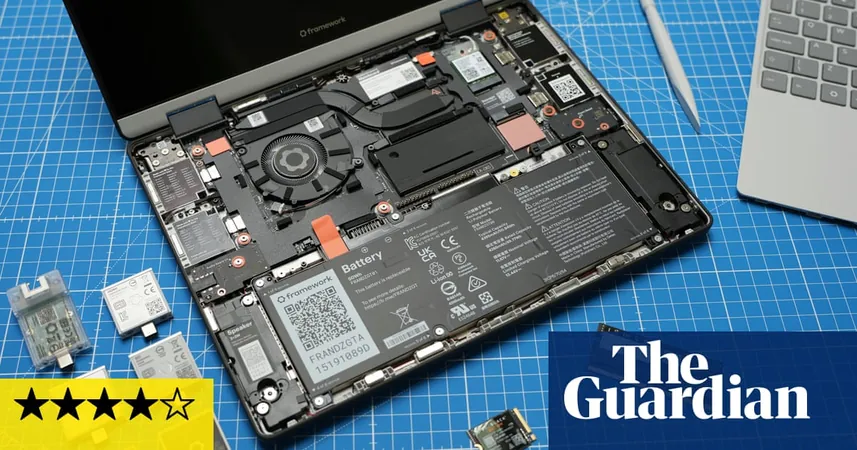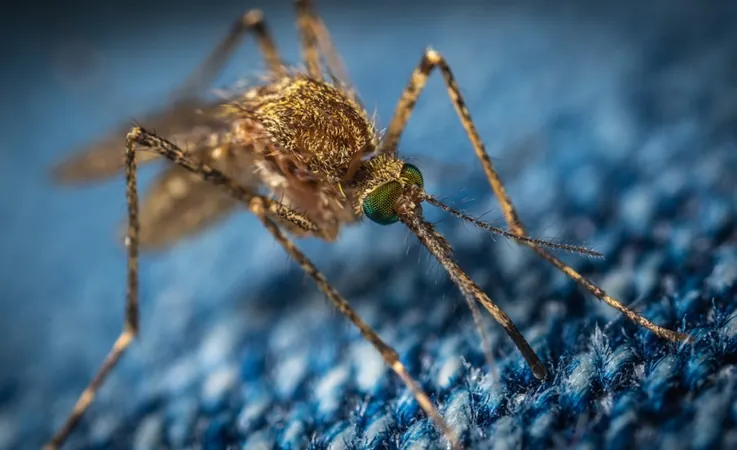
Revolutionizing Cartilage Regeneration: The Breakthrough Use of Graphene Foam!
2025-06-07
Author: Jacob
A Game-Changing Discovery in Osteoarthritis Treatment
Researchers from Boise State University and the University of Idaho have made an astonishing leap in medical science by developing a groundbreaking technique that utilizes biocompatible graphene foam to communicate with cells for cartilage regeneration.
Addressing a Common Ailment
Their pivotal research targets osteoarthritis, a debilitating condition characterized by the irreversible breakdown of hyaline cartilage in joints, leading to excruciating pain and loss of mobility. Currently, complete joint replacement is the standard treatment, but this innovative method could pave the way for more effective, less invasive solutions.
Harnessing the Power of Electrical Stimulation
Using custom-designed, 3D printed bioreactors equipped with electrical feedthroughs, scientists delivered brief daily electrical impulses to ATDC5 cells cultured on the 3D graphene foam. This novel approach proved to significantly enhance both the mechanical strength and growth of these cells—crucial factors for producing lab-grown cartilage.
A Deep Dive into the Technology
ATDC5 cells, which are derived from a murine chondrogenic progenitor cell line, serve as an ideal model for cartilage tissue engineering. This technique allowed the researchers to fully immerse the graphene foam scaffold, which promoted better cell attachment and integration through its porous design. This strategy highlights the potential for using electrical stimuli via conductive biomaterials to bolster engineered tissues.
Innovative Solutions for Stem Cell Stimulation
Lead author Mone't Sawyer remarked, "One of the biggest challenges in applying direct electrical stimulation to stem cells is achieving consistent delivery while simultaneously monitoring the electrical environment and correlating it to cellular responses." Their modular platform delivers precise, scaffold-coupled electrical stimulation, opening new pathways to explore how these electrical cues impact tissue formation.
Unlocking the Secrets of the Electrobiome
Professor David Estrada from the Micron School of Materials Science and Engineering praised Sawyer's research, stating, "This work is paving the way for a deeper understanding of the human electrobiome, highlighting the influence of electric charge on cell fate and tissue function at different scales."
A Promising Future for Engineered Tissues
These groundbreaking findings illustrate the immense potential of applying scaffold-coupled electrical stimuli to refine the mechanical attributes of engineered tissues, providing profound insights into how cells behave within conductive 3D bioscaffolds. This innovative approach could very well redefine the standards for cartilage engineering and disease treatment!









 Brasil (PT)
Brasil (PT)
 Canada (EN)
Canada (EN)
 Chile (ES)
Chile (ES)
 Česko (CS)
Česko (CS)
 대한민국 (KO)
대한민국 (KO)
 España (ES)
España (ES)
 France (FR)
France (FR)
 Hong Kong (EN)
Hong Kong (EN)
 Italia (IT)
Italia (IT)
 日本 (JA)
日本 (JA)
 Magyarország (HU)
Magyarország (HU)
 Norge (NO)
Norge (NO)
 Polska (PL)
Polska (PL)
 Schweiz (DE)
Schweiz (DE)
 Singapore (EN)
Singapore (EN)
 Sverige (SV)
Sverige (SV)
 Suomi (FI)
Suomi (FI)
 Türkiye (TR)
Türkiye (TR)
 الإمارات العربية المتحدة (AR)
الإمارات العربية المتحدة (AR)